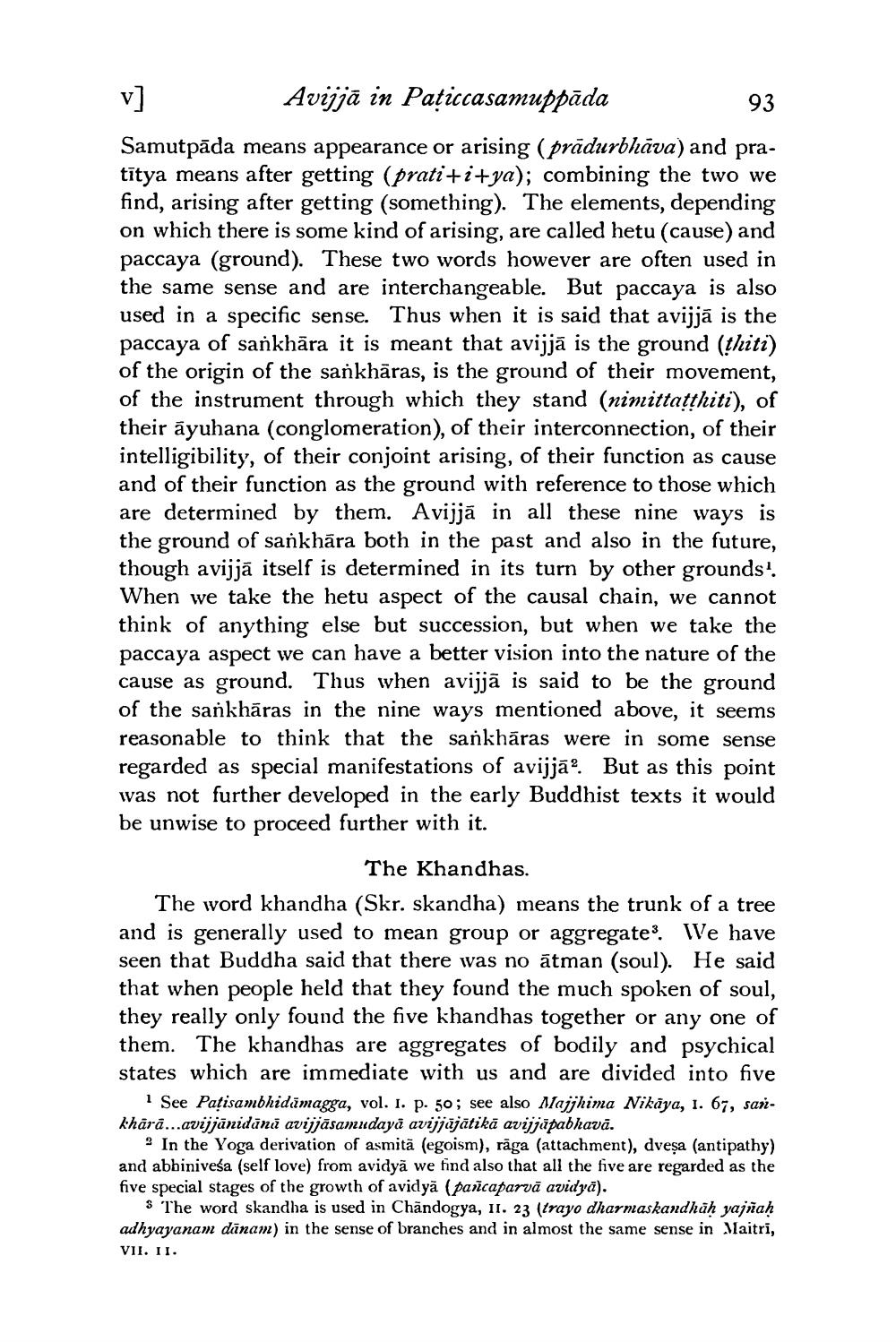________________
Avijjā in Paticcasamuppāda
93
Samutpāda means appearance or arising (prādurbhāva) and pratītya means after getting (prati+i+ya); combining the two we find, arising after getting (something). The elements, depending on which there is some kind of arising, are called hetu (cause) and paccaya (ground). These two words however are often used in the same sense and are interchangeable. But paccaya is also used in a specific sense. Thus when it is said that avijjā is the paccaya of sankhāra it is meant that avijjā is the ground (thiti) of the origin of the sankhāras, is the ground of their movement, of the instrument through which they stand (nimittatthiti), of their ayuhana (conglomeration), of their interconnection, of their intelligibility, of their conjoint arising, of their function as cause and of their function as the ground with reference to those which are determined by them. Avijja in all these nine ways is the ground of sankhāra both in the past and also in the future, though avijjā itself is determined in its turn by other grounds'. When we take the hetu aspect of the causal chain, we cannot think of anything else but succession, but when we take the paccaya aspect we can have a better vision into the nature of the cause as ground. Thus when avijjā is said to be the ground of the sankhāras in the nine ways mentioned above, it seems reasonable to think that the sankhāras were in some sense regarded as special manifestations of avijja. But as this point was not further developed in the early Buddhist texts it would be unwise to proceed further with it.
The Khandhas. The word khandha (Skr. skandha) means the trunk of a tree and is generally used to mean group or aggregates. We have seen that Buddha said that there was no ātman (soul). He said that when people held that they found the much spoken of soul, they really only found the five khandhas together or any one of them. The khandhas are aggregates of bodily and psychical states which are immediate with us and are divided into five
See Patisambhidāmagga, vol. I. p. 50; see also Majjhima Nikāya, 1. 67, sankhārā...avijjānidānā avijjāsamudayā avijjājātikā avijjāpabhavā.
? In the Yoga derivation of asmită (egoism), rāga (attachment), dvesa (antipathy) and abbiniveśa (self love) from avidyā we find also that all the five are regarded as the five special stages of the growth of avidyā pañcaparvā avidyā).
$ The word skandha is used in Chandogya, II. 23 (trayo dharmaskandhāh yajrah adhyayanam dānam) in the sense of branches and in almost the same sense in Maitri, VII. II.




